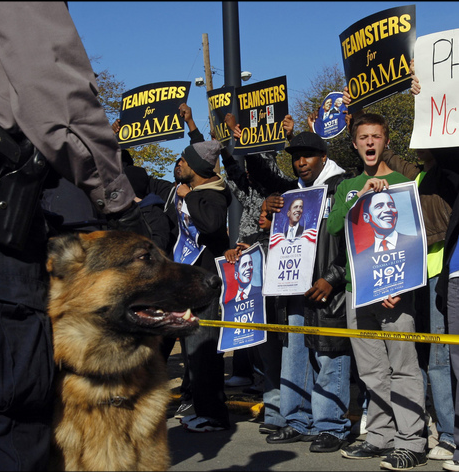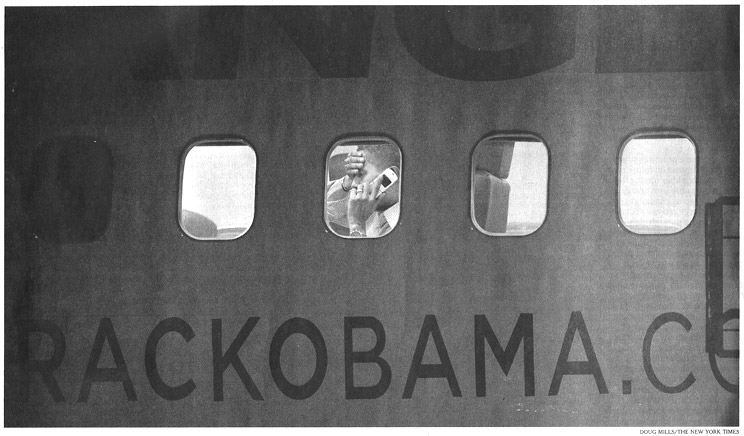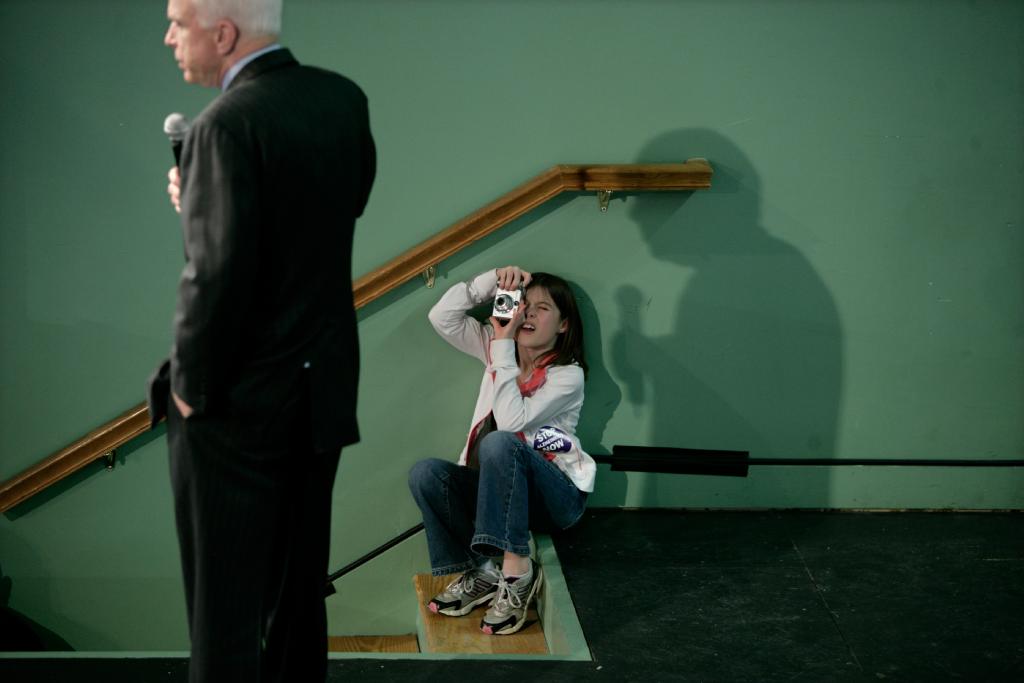Notes
The Visual Codes Of Racism
Racism is the American tragedy, and as the current political campaign reminds us, it comes in many shades and colors.
Sometimes it is explicit, as when a Georgia bar owner visually compared Senator Obama to a playful monkey, or more recently when a San Bernadino Republican group distributed Obama Bucks adorned with visual racist stereotypes linking African Americans with watermelon and fried chicken. At other times it is a bit more subtly coded, as when a nationally syndicated political pundit emphasizes “blood equity” rather than “race or gender” as a sign of one’s fitness to be president, or when the current housing crisis is blamed on the efforts of ACORN, a “community organizing group,” to facilitate mortgages for “low income groups” and “inner city” residents rather than, say, on those within the financial industry who targeted such communities for subprime loans in the first place.
All forms of racism are troubling, especially for a nation dedicated to social and political equality, but in some respects these more subtly coded versions are all the more pernicious because they operate under a thin veil of interpretive ambiguity that enables such advocates to absolve themselves of the responsibility to acknowledge (let alone to justify) the insidious implications of the views that they espouse.
Consider, for example, this photograph published in an online slide show at the Washington Post this past week. The caption reads:
“Police officers accompanied by police dogs, stand guard near supporters of Democratic presidential candidate Barack Obama outside a campaign stop of U.S. Republican presidential candidate John McCain in Sandusky, Ohio.”
At first blush, everything seem reasonable enough. After all, presidential candidates need security, and crowd control is a valid concern for local police departments, even when the purpose of a large event does not engender the high visibility of a hotly contested political campaign. The presence of the police at such an event is a legitimate usage of state authority to maintain public order that should not even raise our eyebrows. But of course there is something disturbing about the scene captured by this photograph and it warrants our careful attention.
A defender of the scene might argue that the photograph clearly marks the tension between “security” and “liberty” that is symptomatic of political culture in a liberal-democratic polity. The pivot point, one might note, is the yellow police line that marks the often tenuous division between public order and chaos. Shot from an oblique angle, the image distances the viewer from easily aligning with either the police officer and dog (the signs of public order) or the Obama supporters (the signs of potential disorder); it thus invites and implies a degree of viewer objectivity that encourages us to treat such tensions as regular and ordinary: protest is legitimate within bounds, but so too is the exercise of state authority, and as long as the two operate in careful equipoise all is well.
But, of course, such an analysis begs the larger question: Why the guard dogs? What is about this particular event that warrants the presence of dogs trained to kill upon command to guard the public welfare against what appear to be peaceful and orderly Obama supporters?
There are no doubt answers to this question that deny any racist implications to the image or the scene it records, but as with those who invoke specific racial stereotypes only to deny any racist implications to their comments, such responses willfully ignore the history and symbols of American racism writ large. And one prominent symbol of that racism has been the use of dogs to manage and control African American populations.
Dogs were regularly used to hunt down escaped slaves or to otherwise keep unruly slaves “in their place” in the 18th and 19th centuries, and in our own era they have been used by the police to intimidate and control nonviolent black marchers and protesters as during the civil rights movement of the 1950s and 1960s. The presence of the dogs at this rally thus function, at least in part, as an altogether insensitive symbolic reference to the “unruly” slave and the “rabble” of black protesters, particularly as the protesters/supporters are divided from the forces of order by a police line that implies that they stand on the other side of the law.
But lest I be accused of a too simple “political correctness,” there is more, for the presumed legitimacy of the very presence of guard dogs—and why else would the police use them but for the belief that they were necessary to maintain the peace—contributes to a culture of racial fear and anxiety that manifests itself in comments like those reported recently on NPR by concerned white citizens who worry that if Senator Obama loses the election there will be race riots across the nation.
Of course, the presence of a single symbol of racism at one political rally will not, by itself, animate or sustain a culture of racism and racial anxiety—or at least not for very long. The problem is that at some point the accumulation and concatenation of such symbols, explicit and subtle alike, reinforce and eventually naturalize one another. And when that happens it becomes increasingly difficult to resist the power and appeal of their “common sense” pretensions.
The only antidote is to develop the verbal and visual literacy necessary to understand and interpret such codes for what they are and to be guided, in the end, by what Martin Luther King referred to as the “true meaning” of our national creed that “all men are created equal.”
Cross-posted from No Caption Needed.
(image: Brian Snyder/Reuters)



Reactions
Comments Powered by Disqus